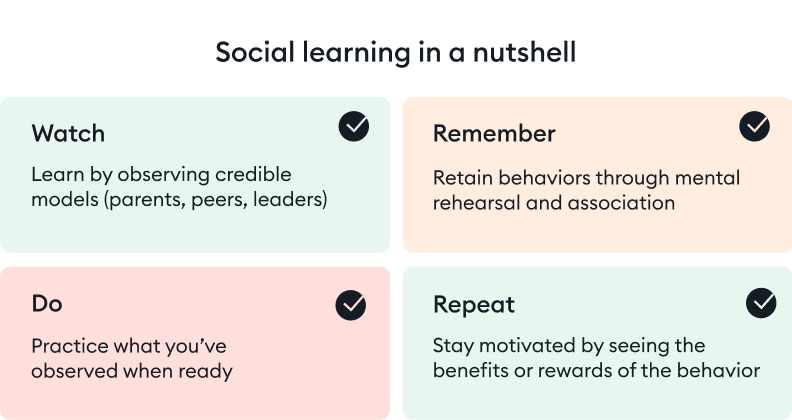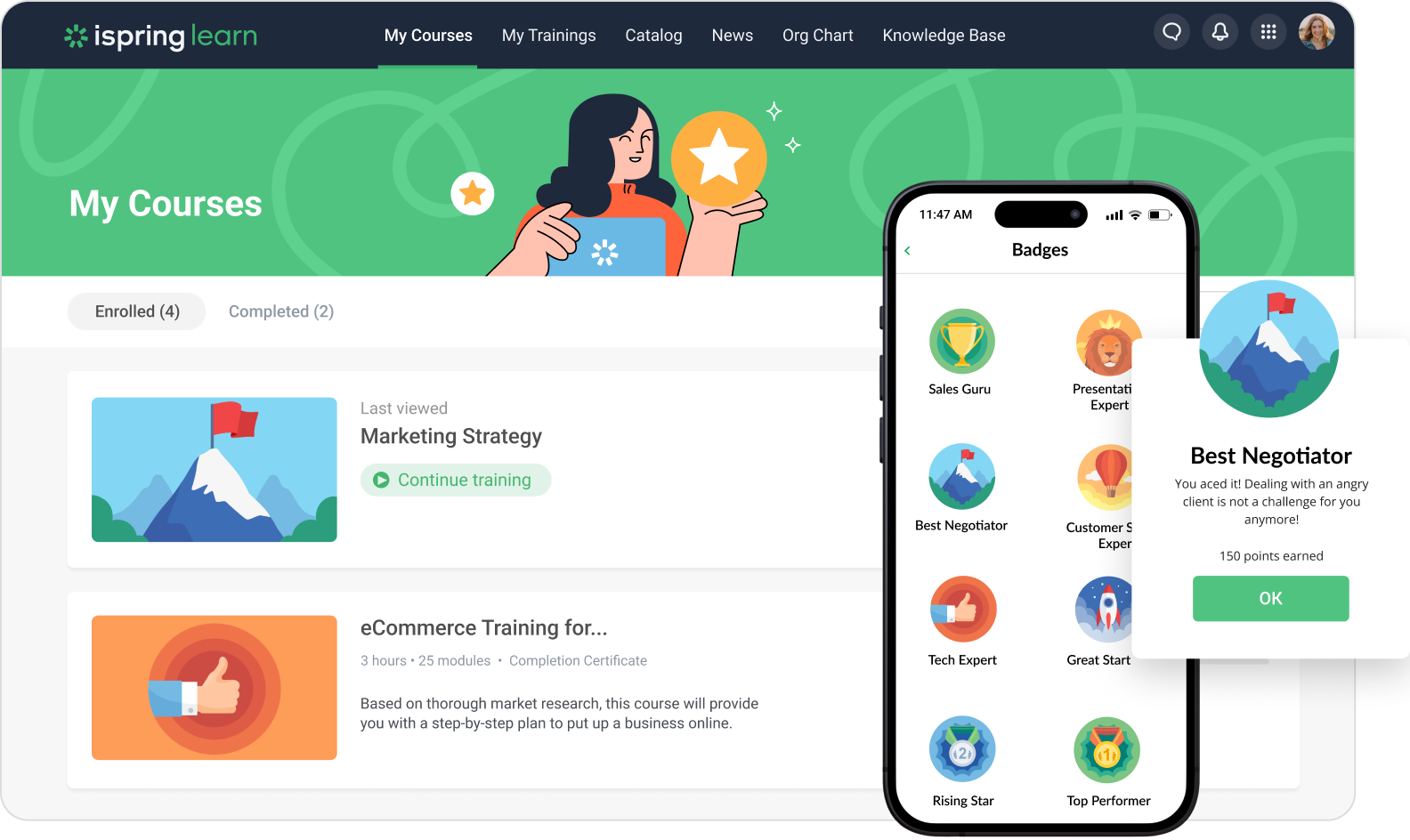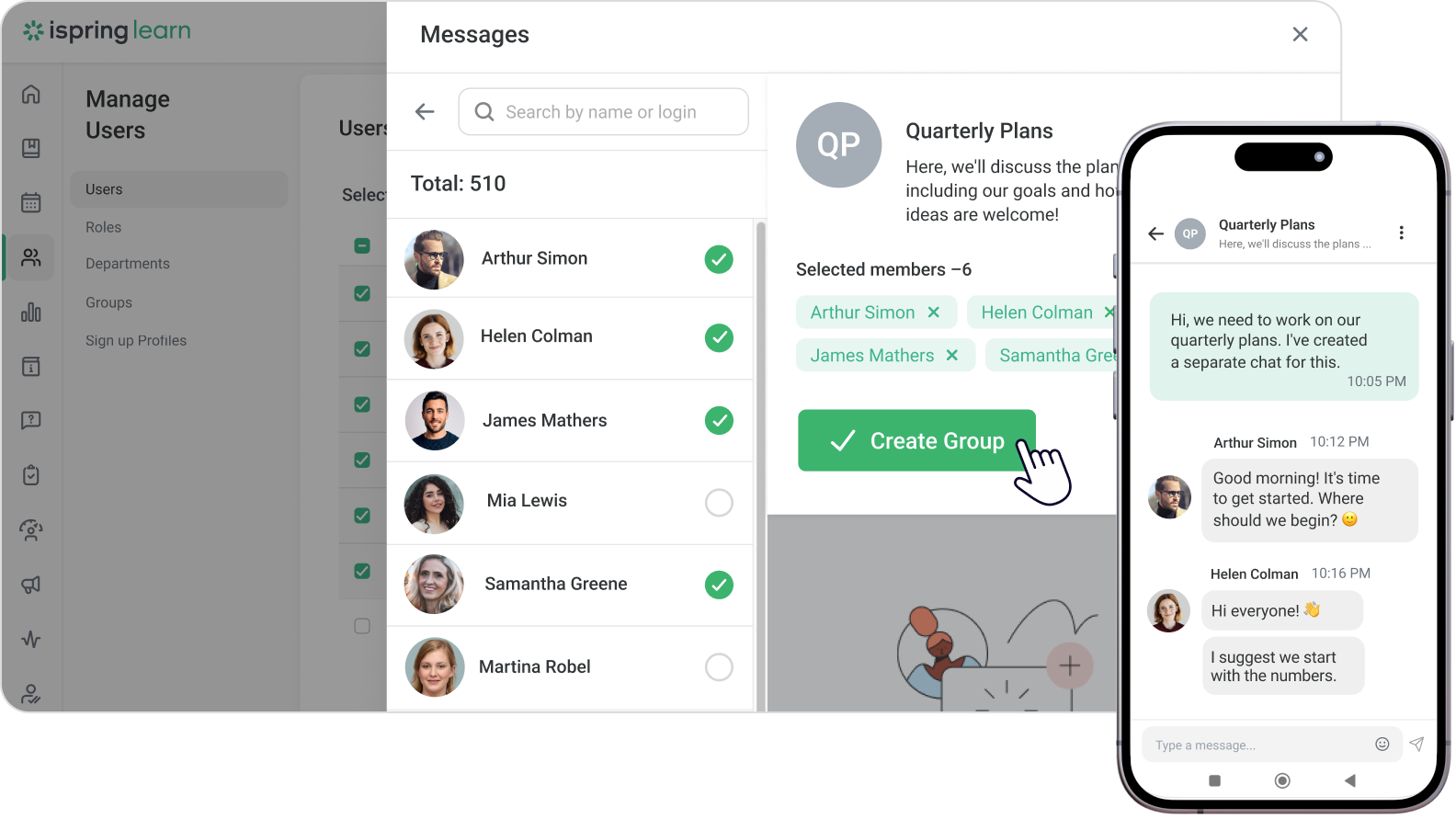Understanding Social Learning Theory: Key Principles and Applications

Have you ever learned something just by watching someone else? Social learning theory (SLT), introduced by psychologist Albert Bandura, reveals the powerful role of observation in shaping behavior. Unlike the traditional learning theory that focuses solely on direct reinforcement, social learning theory highlights the importance of social interactions and cognitive processes in the learning experience.
In this article, we’ll break down the key principles of social learning theory, explore real-world applications, and discuss its relevance in modern education and workplace training. Whether you’re a teacher, trainer, or just curious about how people learn, this guide will help you understand the profound impact of this approach.
What is the Main Idea of Social Learning Theory?
At its core, Bandura’s social learning theory suggests that people learn behaviors, skills, and attitudes by observing others in their environment. Unlike behaviorist learning theories, which emphasize direct reinforcement as the primary driver of learning, social learning theory incorporates cognitive processes and social interactions as key elements of the learning experience.

The theory highlights the interplay between environmental factors, personal factors (like beliefs and mental states), and behavior. This interaction forms the basis of what Bandura called reciprocal determinism, where individuals and their environments continuously influence each other.
A defining feature of social learning theory is the idea that learning doesn’t always require direct experience. Instead, individuals can learn by observing others’ actions and the consequences of those actions — a process known as observational learning. For example, children learn to speak, act, and solve problems by imitating parents, teachers, and peers.
This theory explains a wide range of human behaviors, from learning social norms to acquiring new skills, making it invaluable in both education and workplace training contexts.
Four Steps (Stages) of Social Learning Theory
Bandura identified four key stages that explain how individuals learn through observation and modeling.

Step 1: Attention
The first step involves focusing on the model’s behavior. Effective models capture one’s attention by being credible, relatable, or inspiring.
Step 2: Retention
Learning requires retaining the observed behavior in the memory. This is supported through mental rehearsal, visualization, and association with existing knowledge.
Step 3: Reproduction
Reproducing the behavior relies on physical and cognitive capabilities. Learners need to translate retained observations into actionable skills.
Step 4: Motivation
Motivation determines whether learners adopt the behavior. Positive reinforcement or perceiving benefits from the behavior can drive motivation, while negative consequences can inhibit it.
Applications of Social Learning Theory
Despite its name, social learning theory isn’t just about theory — it’s a hands-on framework for understanding how people learn by watching, modeling, and interacting with others. Here’s how it shows up in different parts of life:
Education
Teachers use social learning principles to create engaging learning environments. By modeling appropriate behaviors or problem-solving methods, they encourage students to learn through observation. Group projects, peer mentoring, and collaborative activities are classic examples of social learning in action.
Workplace training
Companies rely on social learning to make employee training more engaging and effective. For example:
- Onboarding: New hires learn the ropes by observing experienced employees who model company culture and procedures.
- Skill development: Video demos and simulations let employees see tasks in action before practicing them.
- Team collaboration: Social platforms encourage coworkers to share tips, solve problems together, and learn from each other.
Parenting and child development
Parents and caregivers naturally model behaviors and skills for children, often without realizing it. From teaching social norms to fostering communication and problem-solving, they’re putting social learning theory to work every day, and that’s how children learn about the world.
Media and pop culture
Social learning theory also explains the influence of media on behavior. Positive role models in movies or TV shows can inspire prosocial actions, while overexposure to violent video games, media violence, and similar content might reinforce aggressive tendencies.
Real-Life Example: The Bobo Doll Experiment
The Bobo doll experiment, conducted by Albert Bandura in the 1960s, remains one of the most iconic demonstrations of social learning theory. This groundbreaking study not only introduced the concept of observational learning but also challenged prevailing ideas about how behavior is acquired.
The Experiment Setup
Bandura and his team divided children into three groups, each exposed to a different model of behavior toward a large, inflatable doll (the Bobo doll):
- Aggressive model: Children observed an adult aggressively hitting, kicking, and shouting at the doll.
- Non-aggressive model: Children observed an adult calmly playing with the doll or ignoring it.
- Control group: Children were not exposed to any model.
After observing the adults, the children were placed in a room with the Bobo doll to see how they interacted with it.
Key findings
The results were striking. Children exposed to the aggressive model were significantly more likely to replicate the observed behavior, even imitating specific aggressive actions and phrases used by the adult. And children in the non-aggressive and control groups displayed minimal aggressive behavior toward the doll.

Key findings of the Bobo doll experiment
The principles of Bandura’s experiment have profound applications in the digital learning space. Just as children imitated behaviors in the study, employees and learners can model positive behaviors demonstrated through online training.
Examples of Social Learning in the Workplace
Social learning is a key part of workplace development, helping employees build skills and share knowledge with each other. Here are some common examples:
- Shadowing. Employees develop new skills by observing experienced coworkers performing tasks.
- Workshops. Role-playing, group discussions, and other collaborative activities that encourage interaction and learning.
- Mentoring. New hires receive guidance and insights from more experienced colleagues.
- Knowledge sharing. Teams use chats, forums, and shared documents to exchange expertise and answer questions.
As remote work and busy schedules make traditional knowledge-sharing harder, more and more workplaces are incorporating online training solutions.
Social learning platforms like iSpring LMS provide features such as chats, gamification, and a newsfeed, making your online learning platform a space where employees can connect, share ideas, and learn from each other, no matter where they are.

Social learning features in iSpring LMS
Strengths and Weaknesses of Social Learning Theory
Albert Bandura’s social learning theory offers valuable insights into how people learn by observing others. While it has become a widely used framework, it also has its challenges. Let’s take a closer look at its strengths and weaknesses.
Strengths of social learning theory
Social learning theory stands out for several reasons:
- A balanced perspective. By combining the principles of social cognitive theory and behavioral approaches, it provides a well-rounded explanation of how learning happens, going beyond traditional theories focused on either one or the other.
- Practical in everyday settings. Its focus on learning through observation and modeling makes it highly relevant in real-world environments like schools, workplaces, and even at home.
- Learning without direct experience. The theory emphasizes that people can acquire knowledge and skills by watching others, rather than relying solely on trial and error.
- Focus on social interactions. It highlights the importance of social environments and group dynamics in shaping learning, offering useful insights into how people influence and are influenced by those around them.
These strengths show why social learning theory is so adaptable and widely used across different fields.
Weaknesses of social learning theory
Despite its strengths, social learning theory has some limitations:
- Biological factor ignored. It relies heavily on social and environmental influences while giving less consideration to biological factors, like genetics, that also play a role in behavior.
- Hard-to-measure processes. Observational learning involves mental processes, such as attention and memory, which can be difficult to observe or measure reliably.
- Doesn’t account for everyone. The theory doesn’t always capture individual differences, such as personality or past experiences, which can affect how people learn.
- Model quality matters. Learning depends heavily on the model being observed. If the model is ineffective or irrelevant, the outcomes are likely to reflect that.
While these limitations don’t undermine the theory’s importance, they suggest areas where it can be complemented by other approaches.
Criticism of Social Learning Theory
While social learning theory has been groundbreaking in many ways, it has also faced several critiques. These challenges can be grouped into four main areas:
Overemphasis on environment
Social learning theory places a strong focus on social and environmental influences, often neglecting biological and genetic factors. This emphasis on nurture over nature has drawn criticism for oversimplifying human learning behavior. While it highlights the role of social interactions, it doesn’t fully consider how innate factors, such as brain structure or genetic predispositions, might shape learning and behavior.
Gaps in explaining behavior without role models
The theory relies heavily on the idea that people learn by observing others. But what happens when there’s no clear role model? Critics argue that social learning theory struggles to explain how certain behaviors emerge without prior observation, suggesting that other mechanisms, such as internal cognitive processes, might play a role.
Variability in behavioral outcomes
Not everyone exposed to the same environment or role models ends up behaving the same way. For instance, not all individuals raised in violent households become violent themselves, and not all children of criminals show criminal behavior when they grow up. Social learning theory doesn’t fully account for these differences, which may stem from cognitive factors like personality, resilience, or individual agency.
Limited integration of biological insights
The discovery of mirror neurons — brain cells that activate both when performing an action and observing someone else perform it — provides a potential biological basis for observational learning. However, while these findings complement the theory, they don’t explain all aspects of behavior. For example, some actions seem to develop without any external influence, suggesting that additional factors may be at play.
Despite these criticisms, social learning theory remains an influential framework for understanding learning and behavior. Its strengths in explaining observational learning and vicarious reinforcement have had a profound impact on education, clinical psychology, and workplace training, even if it doesn’t address every question.
Applying Social Learning Theory in the Workplace
Social learning theory proposes a valuable framework for designing effective workplace training programs. By leveraging observation, modeling, and interaction, you can foster employee engagement, enhance skill development, and create a collaborative learning culture.
1. Role modeling in onboarding
During onboarding, new hires can learn workplace norms, values, and processes by observing experienced colleagues. For example:
- Shadowing programs. Pairing new employees with mentors allows them to observe best practices and adapt to the organizational culture.
- Video tutorials. Pre-recorded demonstrations of common tasks help employees learn efficiently, even in remote work settings.
2. Peer learning and collaboration
Social learning theory is most applicable in environments where employees can learn from one another. Encouraging collaboration and peer-based knowledge sharing can enhance both individual and team performance:
- Team projects. Assigning group tasks promotes observation, imitation, and mutual learning.
- Discussion boards. Online platforms enable employees to exchange ideas and observe how peers solve challenges.
3. Interactive eLearning tools
eLearning platforms like iSpring LMS incorporate social learning principles through features such as:
- Scenarios where learners can observe realistic decision-making processes and practice skills in a risk-free environment.
- Gamification and leaderboards that motivate learners by rewarding observed and replicated positive behaviors.
- Knowledge sharing portals where employees can access tutorials, share expertise, and collaborate.
4. Using social media for learning
Workplace training can also extend to platforms that employees are familiar with, such as LinkedIn or internal social media tools. For example:
- Hosting live Q&A sessions with industry leaders.
- Sharing short instructional videos for microlearning opportunities.
5. Reinforcing new behaviors
The concept of vicarious reinforcement can be applied to workplace recognition programs. Acknowledge employees who model desired new behaviors — this will motivate others to emulate them and help you foster a culture of continuous improvement.
4 Tips on How to Foster Social Learning in the Workplace
Here are some tips on how to build a workplace culture where learning happens through collaboration and interaction:
1. Promote teamwork
Encourage employees to support one another and collaborate on tasks. Make it clear that asking for help or sharing ideas is not just acceptable, but encouraged. Assign tasks that require teamwork and group problem-solving.
2. Add social elements to your online training
Make online training programs more engaging by integrating features that encourage interaction. This fosters a sense of community and enhances learning. For example:
- Employ chats and comment sections to allow participants to discuss topics and share insights directly within a course.
- Incorporate gamification to set challenges, boost motivation, and let learners personalize avatars.
- Create a newsfeed to allow learners to celebrate achievements, share updates, or ask questions.
3. Use social tools
Take advantage of the fact that employees naturally communicate about work using messaging apps and social platforms. With iSpring LMS’s social features, such as chats and discussion threads, you can direct these conversations toward meaningful learning and knowledge sharing.

Messenger in iSpring LMS
You can also create informal online spaces for casual interactions. Whether it’s sharing ideas, tips, or even lighthearted content like recipes or pet photos, these spaces help foster camaraderie and a culture of collaboration.
4. Create feedback opportunities
Regular feedback loops, like brainstorming sessions or weekly team reviews, encourage employees to exchange ideas and learn from each other’s experiences. These practices make social learning an ongoing process rather than a one-time effort.
Bring Social Learning to Life with iSpring LMS
Social learning theory highlights the power of observation and collaboration in the learning process. By incorporating these principles into workplace training, organizations can foster a culture of continuous development and shared knowledge.
With tools like iSpring LMS, social learning success becomes easier to achieve. Features such as discussion boards, interactive scenarios, and shared resources create opportunities for employees to learn from one another, apply new skills, and collaborate effectively. This approach not only improves knowledge retention but also encourages teamwork and engagement.
Get started with iSpring LMS today for free and help employees grow together while achieving organizational goals.






